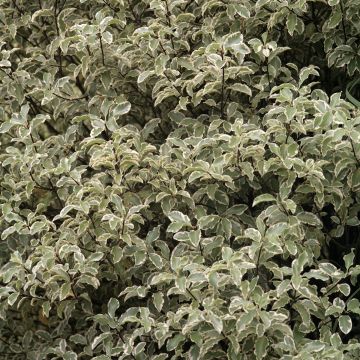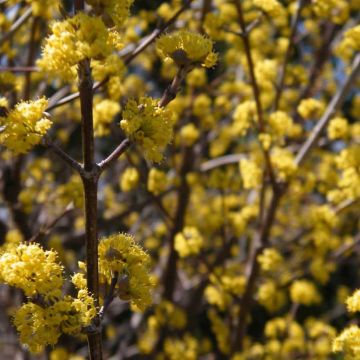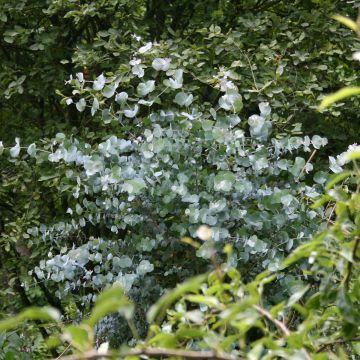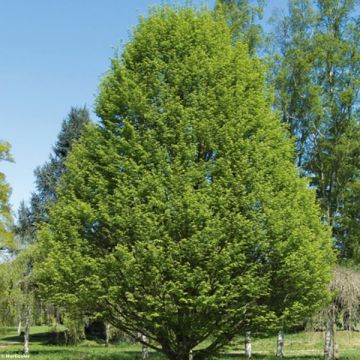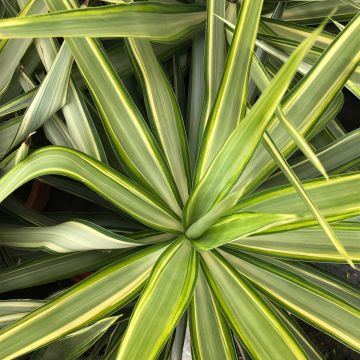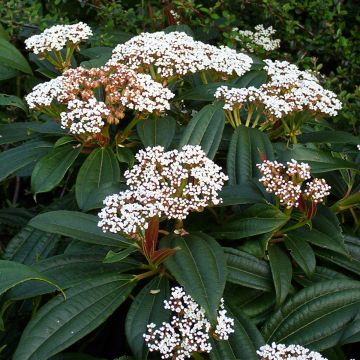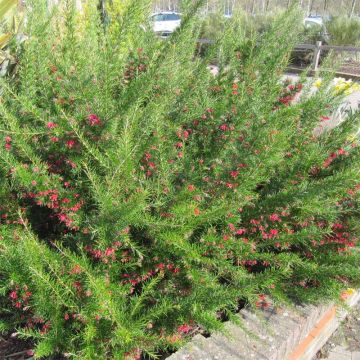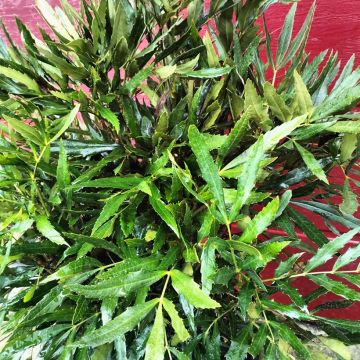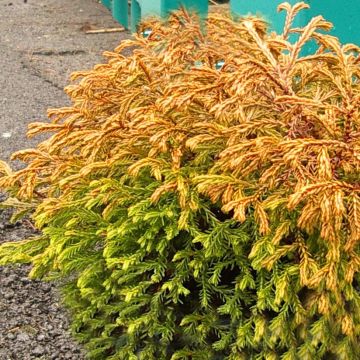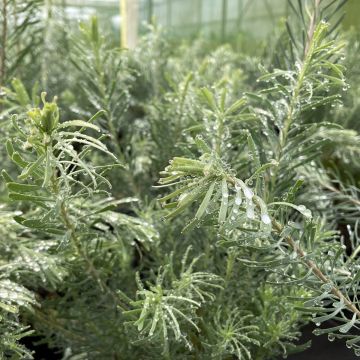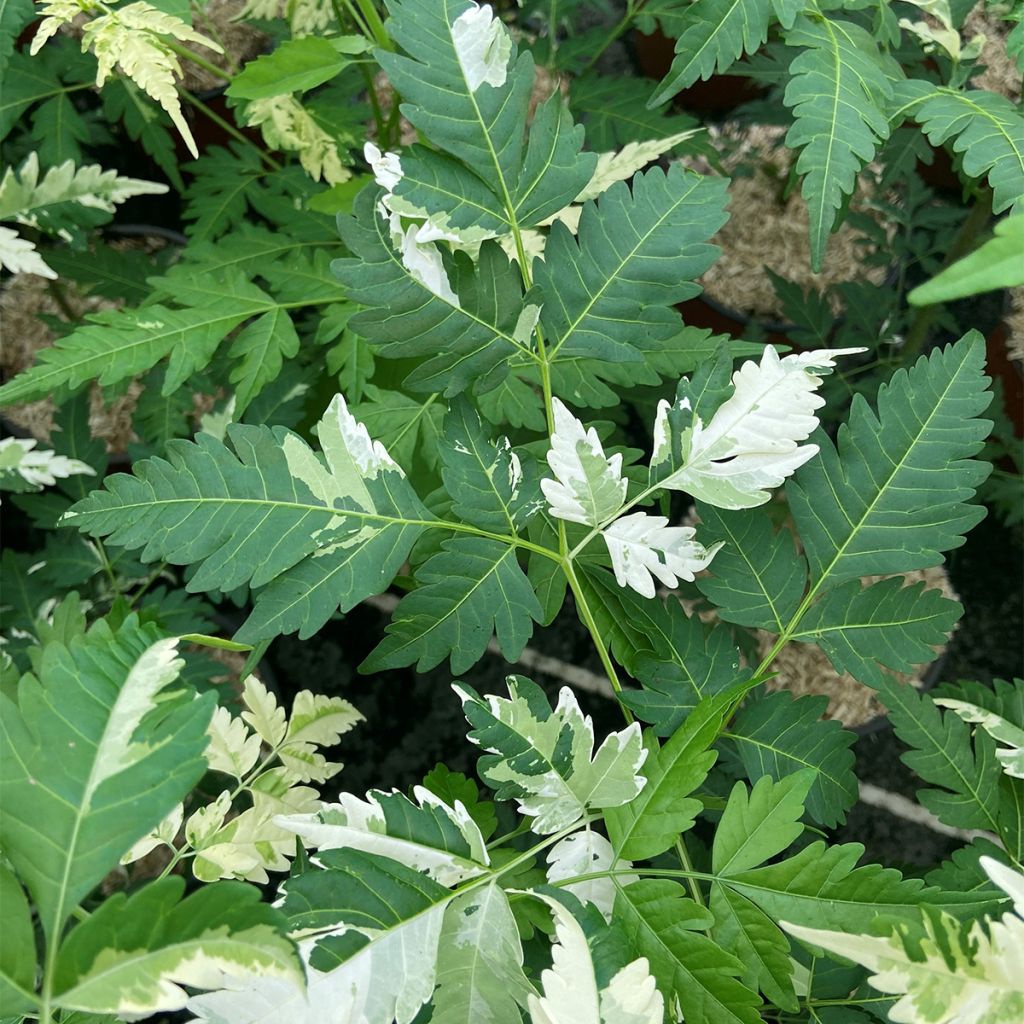

Melia azedarach Jade Snowflake - Margousier panaché
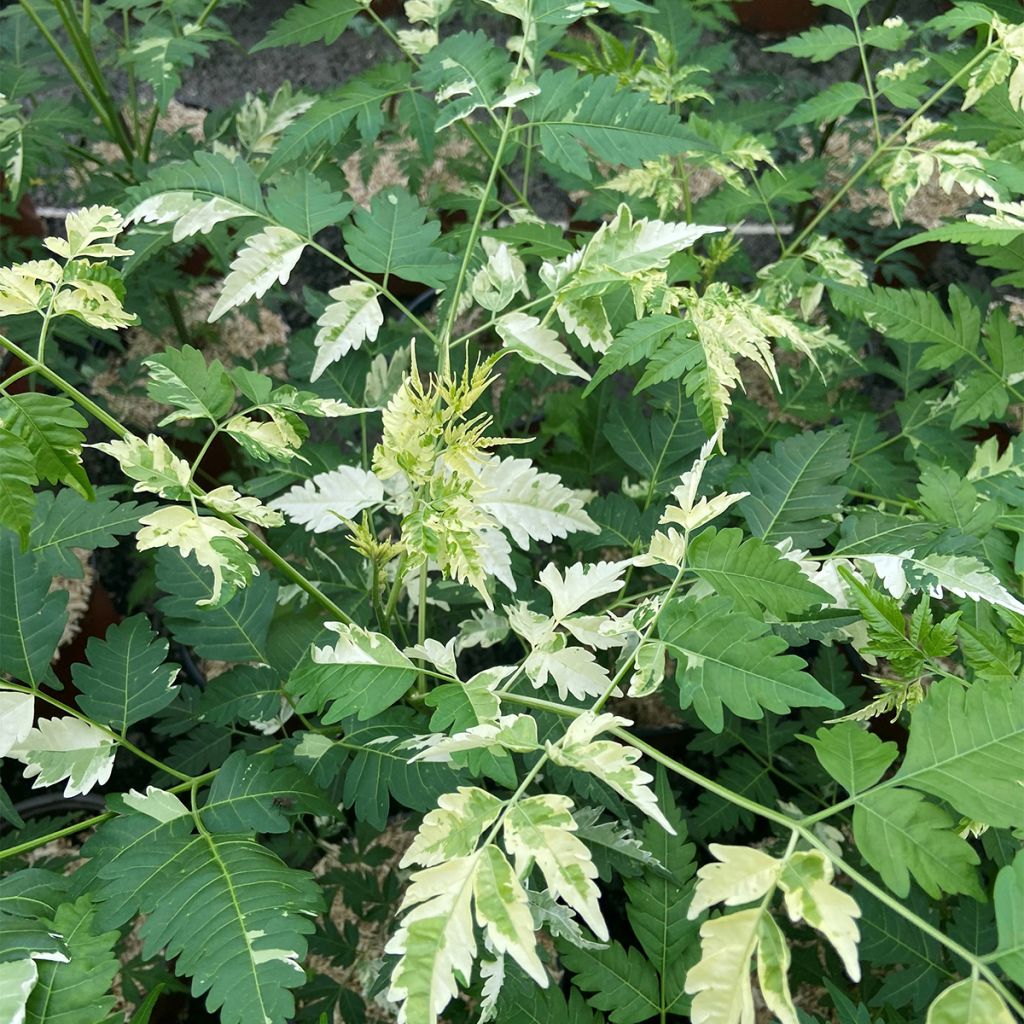

Melia azedarach Jade Snowflake - Margousier panaché
Melia azedarach Jade Snowflake
Melia azedarach Jade Snowflake
Chinaberry Tree, Bead Tree, Cape Lilac, Persian Lilac
This item cannot be shipped to the selected country
Delivery charge from €5.90
More information
Delivery charge from €5.90
More information
Schedule delivery date,
and select date in basket
This plant carries a 24 months recovery warranty
More information
We guarantee the quality of our plants for a full growing cycle, and will replace at our expense any plant that fails to recover under normal climatic and planting conditions.
From €5.90 for pickup delivery and €6.90 for home delivery
Express home delivery from €8.90.

Does this plant fit my garden?
Set up your Plantfit profile →
Description
Melia azedarach 'Jade Snowflake' is a very pretty variegated form of a deciduous small tree commonly known as the Chinaberry tree, Persian Lilac, or Ceylonese Mahogany. The cultivar 'Jade Snowflake' has pinnate foliage that is light and randomly marbled with different shades of white and green. It also charms with its light and fragrant flowering, reminiscent of lilacs, and its honey-coloured fruits that persist on the branches throughout winter. Unaffected by insects and diseases, it offers two major advantages for gardeners: its extreme robustness, and its undemanding frugality. This plant only has one weakness: it does not tolerate very cold winters.
'Jade Snowflake' is a cultivar that was introduced in the states of Georgia and South Carolina around 1830. The genus Melia, belonging to the Meliaceae family, only comprises one species, Melia azedarach, widely distributed in Asia. It can be found from Iraq to Japan, from southern China to Australia, in East Africa, and in the Mediterranean basin. This species is quite polymorphic depending on its environment. It is native to the southern Himalayas (Baluchistan and Kashmir). It gets its nickname "Chinaberry tree" from the traditional use of its naturally pierced stones. It is also called Ceylonese Mahogany, as it is closely related to other mahoganies (Khaya, Swietenia, Dysoxylum), which are tropical trees highly valued in cabinet-making. Melia azedarach has a lifespan of 200 years. Its growth rate is very rapid, at least during the early years. It is hardy down to approximately -10°C (14°F).
Like many variegated plants, 'Jade Snowflake' has a slightly slower growth rate than the classic form. This small tree has a spreading, rounded canopy. It reaches an average height of 9m (29ft) with a spread of 3m (10ft). Its greyish-brown bark is initially smooth. It fissures longitudinally with age, revealing a yellowish wood, while the young branches are slightly tinged with red. Its root system is extensive, and it can sucker at a distance, similar to the strawberry tree. Its foliage falls in autumn and reappears late in spring, along with the flowering. It consists of long leaves measuring 25 to 45cm (10 to 18in) in length, divided into multiple ovate and pointed leaflets with varying toothed margins. They are randomly variegated with white and green. They are shiny on top, lighter underneath, and turn yellow before falling in autumn. The leaves emit an odour when crushed, which can be unpleasant due to the presence of insecticidal compounds. Flowering occurs in May-June, earlier or later depending on the climate. It takes the form of loose panicles measuring 20 to 25cm (8 to 10in) long, appearing in the axils of the leaves on the current year's branches. These fragrant clusters are made up of small tubular and star-shaped flowers with 5 light lilac petals, about 1.5 to 2cm (1in) wide. The corolla tube is a deeper violet, and the anthers are yellow. This flowering gives way to clusters of round fruits, 1.5cm (1in) in diameter, which are initially acidic-green, before turning honey-yellow when ripe. They persist on the branches long after the leaves have fallen, providing food for birds and bats that disperse the seeds. The hard, oval, ribbed fruit stone has a pierced appearance, like a pearl. It contains 6 locules with 6 seeds that resemble brown rice grains.
'Jade Snowflake' is valuable for bringing some light and lushness to wild areas of the garden, even in dry and poor soil. It discreetly stands out from spring to winter when its fruits still attract attention. It can be planted in a border or an informal hedge with other undemanding shrubs such as the bee tree Tetradium daniellii, the Bohemian Olive, botanical roses, strawberry trees, elderberries, and many others.
Properties, uses:
Cultivated for centuries as a temple tree in Persia, Ceylon, and Malaysia, this ornamental and utilitarian small tree has made its way through the centuries, from the arid regions of the Himalayas to the Mediterranean. It was once cultivated in Italy to make rosary beads from its stones. The oily seeds produce oil traditionally used in soaps, waxes, lubricants, as well as a vermifuge, and for treating certain liver and kidney disorders. Its foliage is used as fodder. This medicinal plant is highly appreciated in Ayurvedic medicine.
The shrub also has quality wood with a fine grain, varying in colour from yellowish-pink to dark red. It is rot-resistant. It is known as "Ceylonese Mahogany" and resembles teak (Tectona grandis).
Melia azedarach Jade Snowflake in pictures
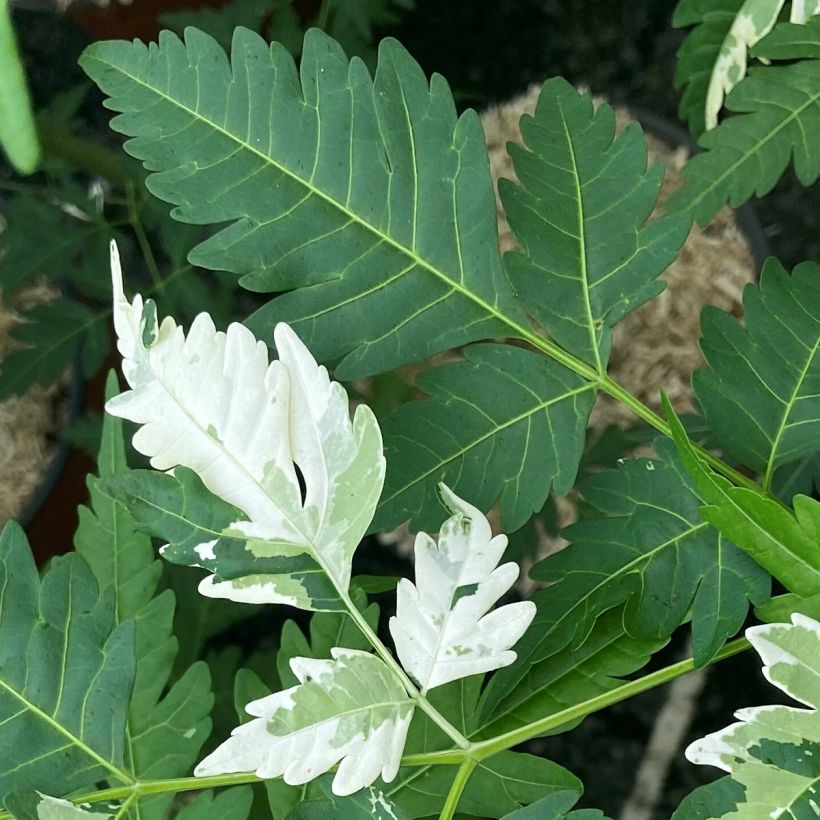

Plant habit
Flowering
Foliage
Botanical data
Melia
azedarach
Jade Snowflake
Meliaceae
Chinaberry Tree, Bead Tree, Cape Lilac, Persian Lilac
Cultivar or hybrid
Planting and care
Plant in spring, or in autumn in mild climates. Plant it in well-prepared, ordinary soil. This bush accepts all properly drained slightly acidic, neutral or slightly chalky soils. It prefers deep, not too poor and slightly moist soils, but it adapts perfectly to poor, mediocre and dry soils in summer once established. Choose a location sheltered from strong winds; its wood is quite brittle. A broken tree lying on the ground will regrow from the stump. Monitor watering to help it establish. Watch out for the appearance of suckers, which can emerge at a distance from the stump when the tree has been damaged by the wind, by a severe cut at the base of the trunk, or by intense cold. Sometimes considered invasive, Melia seeds germinate with difficulty outside warm regions.
Planting period
Intended location
Care
Striking foliage shrubs
Haven't found what you were looking for?
Hardiness is the lowest winter temperature a plant can endure without suffering serious damage or even dying. However, hardiness is affected by location (a sheltered area, such as a patio), protection (winter cover) and soil type (hardiness is improved by well-drained soil).

Photo Sharing Terms & Conditions
In order to encourage gardeners to interact and share their experiences, Promesse de fleurs offers various media enabling content to be uploaded onto its Site - in particular via the ‘Photo sharing’ module.
The User agrees to refrain from:
- Posting any content that is illegal, prejudicial, insulting, racist, inciteful to hatred, revisionist, contrary to public decency, that infringes on privacy or on the privacy rights of third parties, in particular the publicity rights of persons and goods, intellectual property rights, or the right to privacy.
- Submitting content on behalf of a third party;
- Impersonate the identity of a third party and/or publish any personal information about a third party;
In general, the User undertakes to refrain from any unethical behaviour.
All Content (in particular text, comments, files, images, photos, videos, creative works, etc.), which may be subject to property or intellectual property rights, image or other private rights, shall remain the property of the User, subject to the limited rights granted by the terms of the licence granted by Promesse de fleurs as stated below. Users are at liberty to publish or not to publish such Content on the Site, notably via the ‘Photo Sharing’ facility, and accept that this Content shall be made public and freely accessible, notably on the Internet.
Users further acknowledge, undertake to have ,and guarantee that they hold all necessary rights and permissions to publish such material on the Site, in particular with regard to the legislation in force pertaining to any privacy, property, intellectual property, image, or contractual rights, or rights of any other nature. By publishing such Content on the Site, Users acknowledge accepting full liability as publishers of the Content within the meaning of the law, and grant Promesse de fleurs, free of charge, an inclusive, worldwide licence for the said Content for the entire duration of its publication, including all reproduction, representation, up/downloading, displaying, performing, transmission, and storage rights.
Users also grant permission for their name to be linked to the Content and accept that this link may not always be made available.
By engaging in posting material, Users consent to their Content becoming automatically accessible on the Internet, in particular on other sites and/or blogs and/or web pages of the Promesse de fleurs site, including in particular social pages and the Promesse de fleurs catalogue.
Users may secure the removal of entrusted content free of charge by issuing a simple request via our contact form.




































